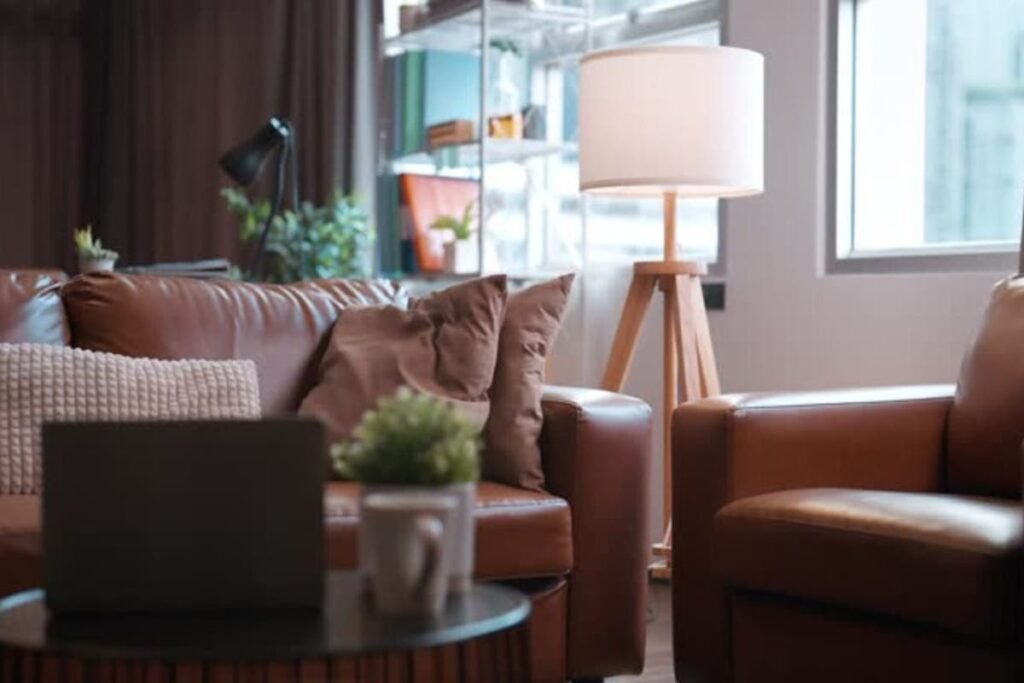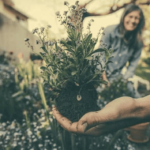At B-dreams, we believe a home should be more than just a place to live—it should be an eco-friendly home for beginners, a sanctuary that supports your well-being and values. As environmental awareness grows, many women feel inspired to live sustainably but don’t know where to start. The good news? Transforming your space into an eco-friendly home for beginners doesn’t need a full overhaul—just intentional, impactful choices that benefit the planet and your personal haven.
This guide is tailored for the modern woman ready to begin her journey. We’ll explore practical, achievable strategies to reduce your carbon footprint, save money, and cultivate an eco-friendly home for beginners that reflects a thriving, conscious lifestyle. Learn more about sustainable decor tips here.

💡 Part 1: Smart Energy Conservation: Save the Planet & Your Budget
1.1. Illuminate with Intelligence: Beyond Just LED Bulbs
Switching to LED bulbs is a key step for an eco-friendly home for beginners. Take it further with smart bulbs controllable via your phone, scheduling them to turn off when you’re away. For a self-care corner, opt for warm-toned LEDs to create a calming vibe. This simple switch cuts your energy bill and carbon footprint—studies show a 75% reduction in energy use EPA, 2025.
1.2. Master Your Climate: Year-Round Comfort Made Sustainable
A programmable thermostat is a game-changer for an eco-friendly home for beginners, saving up to 10% annually on heating and cooling. Pair it with stylish, heavy curtains to block heat in summer and cold in winter. A cozy throw blanket offers a chic alternative to cranking the heat.
1.3. Slay the Energy Vampires: A Simple Evening Ritual
Chargers, coffee makers, and gaming consoles on standby drain energy in an eco-friendly home for beginners. Make it a mindful ritual: plug them into a power strip and switch it off before bed. This can save you up to $100 yearly.
🔄 Part 2: The Zero-Waste Mindset: Redefining “Trash”
2.1. The Reusable Revolution: Stylish & Sustainable Swaps
Transform your kitchen with swaps for an eco-friendly home for beginners: use chic beeswax wraps or silicone lids instead of plastic wrap, and carry a foldable reusable bag. An insulated tumbler for coffee runs is both stylish and planet-friendly.
2.2. Composting with Confidence: Even in an Apartment
Food scraps don’t belong in landfills for an eco-friendly home for beginners. If you have a garden, use a compost bin. In an apartment, a sleek countertop composter or worm farm turns scraps into “black gold” for houseplants.
2.3. Recycle Right: A 5-Minute Guide to Getting it Perfect
Recycling boosts an eco-friendly home for beginners when done correctly. Check your local municipality’s website, rinse containers, and avoid “wish-cycling” to prevent contamination.
💧 Part 3: Water Wisdom: Every Drop Counts
3.1. Upgrade Your Flow: Fixtures That Feel Luxurious, Not Limiting
A low-flow showerhead enhances an eco-friendly home for beginners with a spa-like experience using less water. Add an aerator to your kitchen faucet for efficiency without compromise.
3.2. Become a Leak Detective: Protect Your Home and Resources
A dripping faucet wastes resources in an eco-friendly home for beginners. Use a food coloring test in your toilet tank to spot leaks and fix them quickly.
3.3. Cultivate Water-Saving Habits: Simple Daily Rituals
Turn off the tap while brushing teeth and run appliances only when full to maintain an eco-friendly home for beginners. Water plants in the morning to reduce evaporation.
🌿 Part 4: Conscious Consumption: Curating a Healthy, Beautiful Home
4.1. The Natural Cleaning Cabinet: Recipes for a Toxin-Free Home
Swap harsh cleaners for natural mixes in an eco-friendly home for beginners: combine vinegar, water, and essential oils for a safe, effective cleaner. Baking soda scrubs sinks beautifully.
4.2. Sustainable Style: Choosing Furniture & Decor with a Story
Opt for bamboo or rattan furniture for an eco-friendly home for beginners. Thrift stores offer pre-loved pieces, extending their life sustainably.
4.3. The Plastic-Free Kitchen: A Step-by-Step Pantry Makeover
Start with glass jars and loose-leaf tea for an eco-friendly home for beginners. Swap plastic packaging weekly for a mindful, planet-friendly kitchen.
🎯 Your 30-Day Eco-Friendly Home for Beginners Transformation Plan
Your journey to an eco-friendly home for beginners starts now. Follow this plan:
- Week 1: Switch 5 bulbs to LEDs, set your thermostat, and unplug nightly.
- Week 2: Use a reusable bag and start composting.
- Week 3: Limit showers to 7 minutes and fix leaks.
- Week 4: Make a DIY cleaner and research sustainable brands.
Conclusion: Your Journey to a Thriving Eco-Friendly Home for Beginners
This isn’t about perfection—it’s progress. Every LED bulb, reusable bag, and DIY cleaner builds an eco-friendly home for beginners that benefits you and the planet. At B-dreams, we support your journey.










